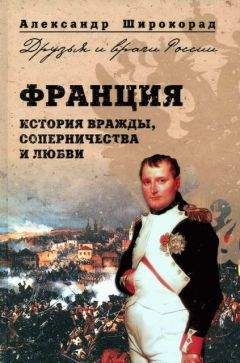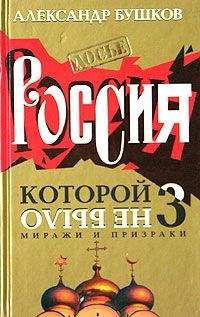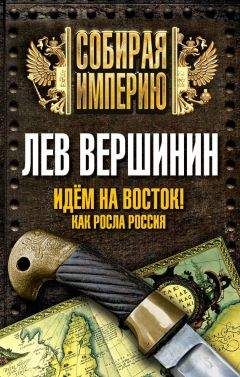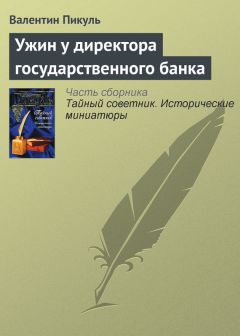Джеффри Хоскинг - Россия и русские. Книга 1
39. Живов В.М., Успенский Б.М. Царь и Бог: семиотические аспекты сакрализации монарха в России // Языки культуры и проблемы переводимости / Под ред. Б.А. Успенского. — М.: Наука, 1987. — С. 47–153.
40. Полное собрание законов Российской империи. — Т. 6. — № 4012. — С. 685–689.
41. Знаменский П.В. Приходское духовенство в России со времени реформы Петра. — Казань: 1873. — Гл.1; Freeze Gregory. The Disintegration of Traditional Communities: The Parish in Eighteenth Century Russia // Journal of Modern History. — 1976. — Vol. 48. — P. 32–50.
42. Cracraft J. Church Reform… — P. 86–87, 251–261; Smolitsch Igor. Russisches Monchtum: Entstehung, Entwicklung, and Wesen. — Amsterdam: Verlag Adolf M. Hakkert, 1978. — P. 390–395.
43. Флоровский Г.В. Пути русского богословия. — Париж: ИМКА, 1937. — С. 84; Карташев А.В. Очерки по истории русской церкви. — Т. 2. — С. 323–330.
44. Шмеман Александр. Исторический путь православия. — Нью-Йорк: Изд-во им. Чехова, 1954. — С. 380–381; Флоровский Г.В. Пути русского богословия. — С. 82–83.
45. Живов В.М., Успенский Б.М. Царь и Бог… — С. 142.
46. Hughes. Russia in the Age of Peter the Great. — P. 378–389.
47. Lotman Iu. M. and Uspenskii B. A. Echoes of the Notion ‘Moscow the Third Rome’ in Peter the Great’s Ideology // Lotman Iu.M. and Uspenskii B.A. The Semiotics of Russian Culture / Ed. by Ann Shukman // Michigan Slavic Contributions. — Ann Arbor: Department of Slavic Studies, University of Michigan. — 1984. — № 11. — P. 53–67; Schmidt Christoph. Aufstieg und Fall der Fortschrittsidee in Russland // Historische Zeitschrift — 1996. — Nq 263. - S. 1-30.
48. Полное собрание законов Российской империи. — Т. 6. — № 3534. — 28 февраля 1720.
49. Дихотомия исследована в работе: Raeff. The Well-Ordered Police State.
50. Hughes. Russia in the Age of Peter the Great. — P. 249–257.
51. Yaney George L. The Systematization of Russian Government: Social Evolution in the Domestic Administration of Imperial Russia, 1711–1905. — Urbana: University of Illinois Press, 1973. — особенно P. 81 — 100.
52. О названии знати см.: Meehan-Waters Brenda. Autocracy and Aristocracy: The Russian Service Elite of 1730. — New Brunswick, N.J, Rutgers University Press, 1982. — P. 18, 208.
53. Ibid. — Chap. 1; Романович-Славатинский А. Дворянство в России от начала XVIII века до отмены крепостного права. — СПб., 1870. — С. 11–22; Lee Farrow. Peter the Great’s Law of Single Inheritance: State Imperatives and Noble Resistance // Russian Review. - 1996. - Vol. 55. - P. 430–447.
54. Meehan-Waters B. Autocracy and Aristocracy. — P. 31; Boдарский Я.Е. Правящая группа светских феодалов в России в XVII веке //Дворянство и крепостной строй в России XVI–XVIII вв.: Сборник статей, посвященных памяти Алексея Андреевича Новосельского / Под ред. Н.И. Павленко. — М.: Наука, 1975. — С. 105–107.
55. Le Donne John. Absolutism and Ruling Class: The Formation of the Russian Political Order, 1700–1825. — New York: Oxford University Press, 1991. — P. 3.
56. Анисимов Евгений. Время петровских реформ. — Д.: Лен-издат, 1989. — С. 385–393; Hughes. Russia in the Age of Peter the Great — P. 210–228.
57. Hughes. Russia in the Age of Peter the Great — P. 301–304.
58. Романович-Славатинский А. Дворянство в России от начала XVIII века до отмены крепостного права. — С. 82–83; Modern Encyclopedia of Russian and Soviet History. — Vol. 6. — P. 86–89.
59. Hughes. Russia in the Age of Peter the Great — P. 307–308; Vucinich Alexander. Science in Russian Culture: A History to 1860. — London: Peter Owen, 1963. — Chaps. 2–3.
60. Vucinich. Science in Russian Culture. — P. 105–116; Serman Ilya Z. Mikhail Lomonosov: Life and Poetry. — Jerusalem: Center of Slavic and Russian Studies of the Hebrew University, 1988. — Chap. 1.
5. Государственные и общественные институты в XVIII в.1. Lotman Iu. М. and Uspenskii В. A. The Role of Dual Models in the Dynamics of Russian Culture (up to the End of the Eighteenth Century) // Lotman Iu.M. and Uspenskii B.A. The Semiotics of Russian Culture / Ed. by Ann Shukman // Michigan Slavic Contributions. — Ann Arbor: Department of Slavic Studies, University of Michigan, 1984. № 11. - P. 5.
2. Kivelson Valeric A. Kinship Politics/Autocratic Politics: A Reconsideration of Early Eighteenth Century Political Culture // Imperial Russia: New Histories for the Empire / Ed. by Jane Burbank and David L. Ransel. — Bloomington: Indiana University Press, 1998. — P. 5—31.
3. Власть и реформы: От самодержавной к советской России / Под ред. Б.Л. Ананьича. — СПб.: Дмитрий Буланин, 1996. — С. 158–159; Омельченко О.А. «Законная монархия» Екатерины II: просвещенный абсолютизм в России. — М.: Юрист, 1993. — С. 39–45.
4. Ransel David L. The Politics of Catherinian Russia: The Panin Party. — New Haven: Yale University Press, 1975. — P. 76–98; 136–137.
5. Article 37, in P. Dukes, ed., Russia under Catherine the Great, vol. 2: Nakaz to the Legislative Commission (Newtonville, Mass.: Oriental Research Partners, 1977), 46; Omel’chenko, «Zakonnaia monarkhiia», 100–102.
6. Омельченко О.А. «Законная монархия» Екатерины II… — С. 112–126.
7. Jones. R. Е. The Emancipation of the Russian Nobility, 1762–1785. — Princeton: Princeton University Press, 1973. — P. 267–283.
8. LeDonne John P. Ruling Russia: Politics and Administration in the Age of Absolutism, 1762–1796. — Princeton: Princeton University Press, 1984. — P. 343.
9. Kimerling Wirtschafter Elise. Legal Identity and the Possession of Serfs in Imperial Russia // Journal of Modern History. — 1998. — Vol. 70. - P. 561–587.
10. Bartlett R. P. Catherine II’s Draft Charter to the State Peasants // Canadian-American Slavic Studies. — 1989. — Vol. 23. — P. 36–57.
11. LeDonne John. Absolutism and Ruling Class: The Formation of the Russian Political Order, 1700–1825. — New York: Oxford University Press, 1991. — P. 297–301.
12. LeDonne J. Ruling Russia. — P. 5, 343.
13. Романович-Славатинский А. Дворянство в России от начала XVIII века до отмены крепостного права. — С. 82–83; Троицкий С.М. Русский абсолютизм и дворянство в XVIII веке. — М.: Наука, 1974. — С. 269–271.
14. Ключевский В.О. Курс русской истории // Ключевский В.О. Сочинения. — Т. 5. — С. 183; RaeffMarc. Origins of the Russian Intelligentsia: The Eighteenth Century Nobility. — New York: Harcourt, Brace, 1966. — P. 75.
15. Michel Confino. Histoire et psychologie: a propos de la noblesse russe au dix-huitieme siecle // Societe et mentalites collectives en Russie sous l’Ancien R6gime. — Paris: Institut d’Etudes Slaves, 1991. — P. 345–387.
16. Власть и реформы. — С. 147; Kahan Arcadius. The Plow, the Hammer, and the Knout: An Economic History of Eighteenth-Century Russia. — Chicago: University of Chicago Press, 1985. — P. 319–321, умалял значение подушного налога. Милюков П.Н. Государственное хозяйство России в первой четверти XVIII столетия и реформа Петра I. — СПб., 1895. — С. 727–728, считал, что налоги повысились на 42 процента.
17. Hughes Lindsey. Russia in the Age of Peter the Great. — New Haven: Yale University Press, 1998. — P. 137–138.
18. Kahan Arcadius. The Plow, the Hammer, and the Knout… — Chap. 3; Туган-Барановский М.И. Русская фабрика в прошлом и настоящем. — Изд. 7-е. — М.: Гос. соц-эком. изд-во, 1938. — Гл. 1.
19. Александров В.А. Сельская община в России XVII — начала XIX века. — М.: Наука, 1976.— С. 111–115; Confino. Histoire et psychologic. - P. 51–62, 80–86,117–126.
20. Kahan Arcadius. The Costs of ‘Westernization’ in Russia: The Gentry and the Economy in the Eighteenth Century // Slavic Review. — 1966.-Vol. 25.-P. 40–66.
21. LeDonne J. Absolutism and Ruling Class… — P. 269–275.
22. Blum Jerome. Lord and Peasant in Russia from the Ninth to the Nineteenth Century. — New York: Atheneum, 1964. — P. 380–385.
23. Кизеветтер А.А. Посадская община в XVIII веке. — С. 242–263; Рындзюнский П.Г. Городское гражданство дореформенной России. — М.: Изд-во АН СССР, 1958. — С. 40–51; Hittle J. Michael. The Service City: State and Townsmen in Russia, 1600–1800. — Cambridge, Mass.: Harvard University Press, 1979. — Chap. 6.
24. Hittle J. Michael. Service City. — Chap. 10; Hildermeier Manfred. Burgertum und Stadt in Russland, 1760–1870: Rechtliche Lage und soziale Struktur. — Cologne: Bohlau Verlag, 1986. — S. 81–90.
25. Миронов Б.Н. Русский город в 1740—1860-е годы: демографическое, социальное и экономическое развитие. — Д.: Наука, 1990; Moon David. Reassessing Russian Serfdom // European History Quarterly. - 1996. - Vol. 26. - P. 483–526.
26. Rudolph Richard L. Family Structure and Proto-Industrialization in Russia // Journal of Economic History. — 1980. — Vol. 40. — S. 111–118; Hoch Steven L. Serfs in Imperial Russia: Demographic Insights // Journal of Interdisciplinary History. — 1982. — Vol. 13. — P.221–246.
27. Достаточно глубокое исследование артели представлено в работе: Staehr Georg. Ursprung, Geschichte, und Bedeutung des russischen Artels: 2 vols. — Dorpat, 1890–1891.
28. Rudolph Richard L. Agricultural Structure and Proto-Industrialization in Russia: Economic Development with Unfree Labor // Journal of Economic History. — 1985. — Vol. 45. — P. 47–69; Melton Edgar. Proto-Industrialization, Serf Agriculture, and Agrarian Social Structure: Two Estates in Nineteenth-Century Russia // Past and Present. — 1987. — № 115. — P. 69—106; Rosovsky Henry. The Serf Entrepreneur in Russia. Explorations in Entrepreneurial History 1953–1954. - Vol. 6. - P. 207–229.
29. Hosking Geoffrey. Russia: People and Empire, 1552–1917. — P. 104–105; Анисимов E.B. Россия в середине XVIII века: борьба за наследие Петра. — М.: Мысль, 1986. — С. 54–56, 61–62; Троицкий С.М. Финансовая политика русского абсолютизма в XVIII веке. — М.: Наука, 1966. — С. 214; Christian David. Living Water: Vodka and Russian Society on the Eve of Emancipation. — Oxford: Clarendon Press, 1990. - P. 42–43, 142–151.
30. Hoch Steven L. Serfdom and Social Control in Russia: Petrovskoe, a Village in Tambov. — Chicago: University of Chicago Press, 1986. — Chap. 1. — Цит.: p. 64; Moon. Reassessing Russian Serfdom. — P. 500–508.
31. Миронов Б.Н. Социальная история России периода империи. — С. 429–435.
32. Александров В.А. Сельская община в России XVII — начала XIX века. — Ч. 2–3.
33. Новиков А.И. Записки земского начальника. — СПб., 1899. — С. 39–42; Быт великорусских крестьян-землепашцев. — СПб.: Издательство Европейского дома, 1993. — С. 45–50. Эти исследования жизни крестьян относятся к 1890-м гг., но практически они охватывают более чем вековой период.
34. Александров В.А. Сельская община в России XVII — начала XIX века. — Ч. 4; Atkinson Dorothy. Egalitarianism and the Commune // Land Commune and Peasant Community in Russia / Ed. by Roger Bartlett. — London: Macmillan, 1990. — P. 7—20.
35. Bohac R.D. Peasant Inheritance Strategies in Russia // Journal of Interdisciplinary History. — 1985. — Vol. 16. — P. 23–42; Frierson C.A. Razdel: The Peasant Family Divided// Russian Review. — 1987. — Vol. 46.-P. 35–51.
36. Кропоткин П.А. Записки революционера. — М.: Московский рабочий, 1988. — С. 218.
37. Якушкин И.Д. Мемуары, статьи, документы. — Иркутск: Восточно-Сибирское книжное издательство, 1993. — С. 99.
38. Мирошниченко П.Я. Народные истоки утопического социализма в России // История общественной мысли: современные проблемы. — М.: Наука, 1972. — С. 480.
39. Hughes. Russia in the Age of Peter the Great. — P. 454–455.
40. Ibid. — P. 456–457; Perrie Maureen. Popular Monarchism: The Myth of the Ruler from Ivan the Terrible to Stalin // Reinterpreting Russia / Ed. by Robert Service and Geoffrey Hosking. — London: Edward Arnold, 1999. - P. 156–169.
41. Из архива Пугачева // Пугачевщина. — М.: Государственное издательство, 1926. — Т. 1. — С. 40–42.
42. События пугачевского восстания изложены в работе: Raeff Marc. Pugachev’s Rebellion // Preconditions of Revolution in Early Modern Europe / Ed. by Robert Foster and Jack P. Greene. — Baltimore: Johns Hopkins Press, 1970. — P. 161–201; and Longworth Philip. The Pugachev Revolt: The Last Great Cossack-Peasant Rising// Rural Protest: Peasant Movements and Social Change / Ed. by H. A. Landsberger. — London: Macmillan, 1974. — P. 194–256.




